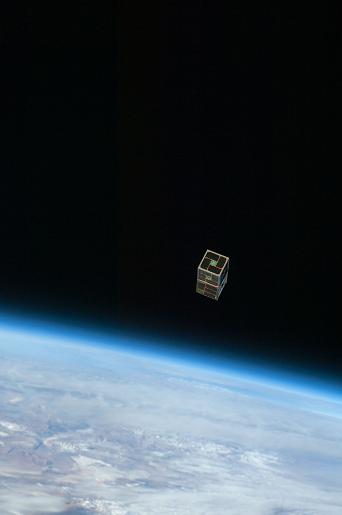 |
| Credits: NASA |
The Iridium satellite constellation, owned and operated by Iridium Communications Inc., is used to provide voice and data coverage over Earth’s entire surface.
Sixty-six satellites orbiting the Earth in low Earth orbit at 781 km altitude and 86.4 degrees inclination allow for pole-to-pole communication.
The Iridium modems deliver truly global communication capabilities. The solutions that incorporate the Iridium technology range from maritime voice terminals to vehicle tracking solutions. Most recently, we have seen them embedded in maritime robots like the iRobot seagliders collecting data in the Gulf of Mexico after the DeepWater Horizon accident.
Even if the majority of the applications are surface-to-surface communication, there have been attempts made to use the Iridium network for high-altitude communication. As such, weather balloons and sounding rockets have used the network to download data back to Earth.
A novel communication method for CUBESAT payloads using the Iridium network is proposed by Henric Boiardt and Christian Rodriguez from Florida International University for the PicoPanther payload, one of the entries in the Florida University Satellite competition.
The main challenges to overcome in order to adapt the Iridium technology to microsatellite communication in low Earth orbit are the miniaturization and the Doppler effects.
The CUBESAT standard was developed by California Polytechnic State University and Stanford. The standard specifies that one unit structure is a 10cm x 10cm x 10cm cube. This is quite a restrictive size-factor constraint.
The Doppler effects have to be considered due to the velocities at which the satellites operate in low Earth orbit. To minimize these effects, the microsatellite using the Iridium network to communicate with the ground station must have an orbit similar to the communication satellites in the network, which is a polar orbit. For the same reasons, Iridium itself supports inter-satellite links only between satellites orbiting in the same direction. Otherwise, the frequency shift due to orbital relative velocities would make communication unreliable.
If the proposed method is proven feasible, the Iridium network would definitely bring near-continuous communication to microsatellite technology.










 Subscribe to blog posts using RSS
Subscribe to blog posts using RSS










